
August is a month that discourages even the most tenacious gardeners. Amid sweltering heat, stifling humidity, drought, and a general listlessness, most gardeners retreat to the drone of the air conditioner, content to enjoy their garden from the window until there’s a break in the hot summer weather. But the view from that window is rarely good. As the milder days of midsummer give way to the season culturally known as “back to school,” the garden too often sinks into the horticultural equivalent of a long-winded sigh. Its signs and symptoms are well known: that quintessential “baked” look, flaccid leaves, and other signs of distress that make gardeners cringe.
The absence of smart-looking gardens in late July, August, and even early September is probably due to our shopping habits. Most gardeners shop and plant in spring and early summer, and late-summer bloomers don’t always fill the shelves at the garden centers in spring. Things have to look good in a pot, and sometimes these sleepy-headed, slow-to-break-dormancy summer perennials aren’t quite ready for showtime on Mother’s Day weekend.
But there is an ample palette of thriving plants out there that can make August look audacious. Search out these performers and you’ll plant your way toward a garden that defies—and even celebrates—the high season.

Purple burnet is a fascinating combo of foliage and flowers
Name: Sanguisorba tenuifolia var. purpurea
USDA Hardiness Zones: 4–9
Size: 4 feet tall and wide
Conditions: Full sun to partial shade; moist, well-drained soil
If you’re looking for a trendy alternative to the late-summer wardrobe of black-eyed Susans and ornamental grasses, consider replacing those plants with the bullet-shaped, ruby-hued flowers of purple burnet. In a shape and hue that few plants pull off in one ensemble, its flowers add subtle charm among plants like prairie dropseed (Sporobolus heterolepis, Zones 3–8) and Korean feather reed grass (Calamagrostis brachytricha, Zones 5–9). The foliage of purple burnet offers a contrast too: The jagged, blue-green leaves differ in shape and color from the finer-looking, sturdier culms of grasses.
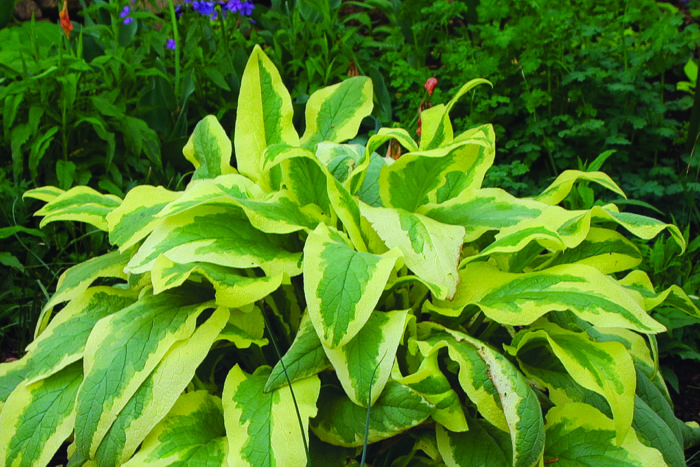
‘Axminster Gold’ comfrey is sure to get attention
Name: Symphytum × uplandicum ‘Axminster Gold’
Zones: 4–9
Size: Up to 2 feet tall and 4 feet wide
Conditions: Partial shade; moist, fertile soil
Imagine a tussock of luxuriant, pale-gold-and-green foliage and you’ve got a mental image of ‘Axminster Gold’ comfrey. Cold hardy and heat tolerant, this worthy addition to the shade garden shines like a lightbulb; just one plant can change the look of your backyard. Tiny pink flowers dangle from tall stalks for a week or two in late spring. Cut the stalks down in mid-June to make way for another summer-long flush of golden foliage. This plant is amazingly wilt-proof through spells of wretched humidity; the only downside is that you may wilt trying to find it in garden centers.
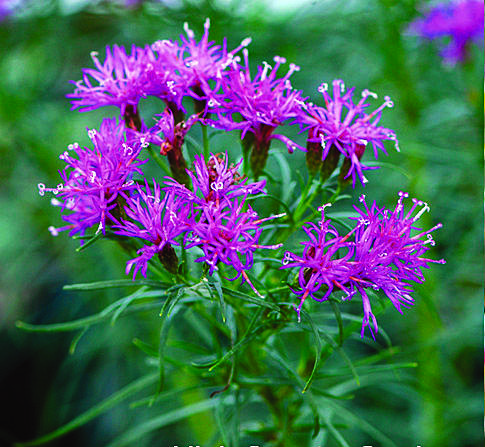
Letterman’s ironweed attracts the right kind of wildlife
Name: Vernonia lettermannii and cvs.
Zones: 4–8
Size: 2 to 3 feet tall and wide
Conditions: Full sun to partial shade; moist, well-drained soil
Letterman’s ironweed, one of the coolest new native plants to hit the horticultural runway, is a plant few gardens should be without. This purple-flowering bombshell displays a soft texture until late July, when bountiful sprays of flowers upgrade it from a C-list celebrity to a main-stage attraction. Butterflies and hummingbirds take note, too, flocking to the nectar-laden flowers in late summer. Do you have dry soil? You’ll do just fine with this Oklahoma and Arkansas native. Deer steer clear of this plant thanks to its rough, sandpapery leaves.
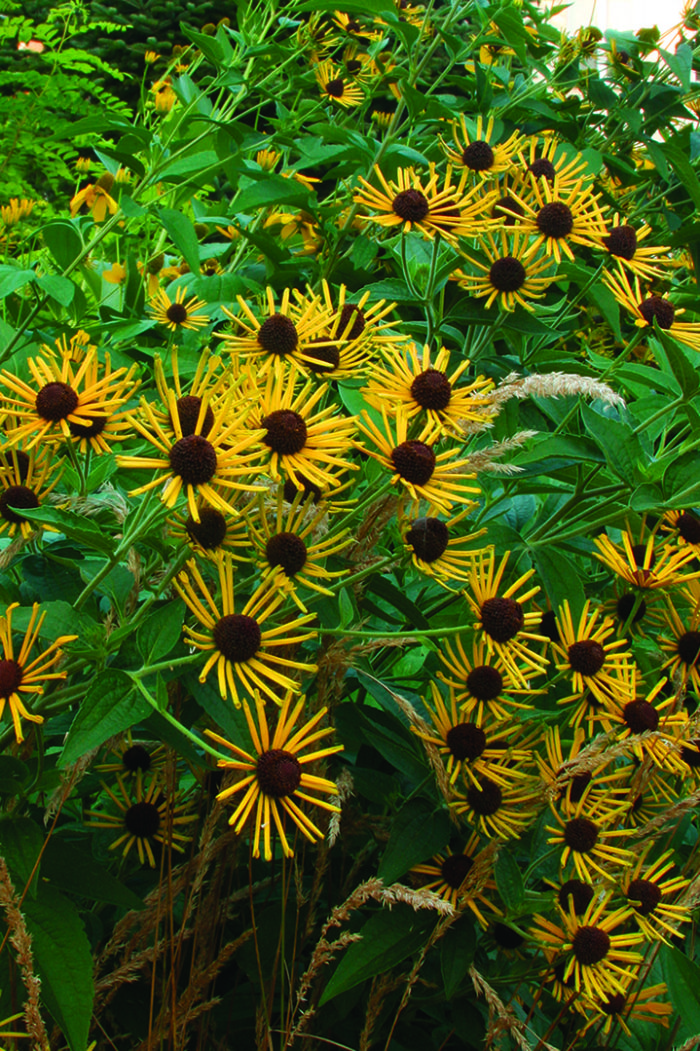
‘Henry Eilers’ sweet coneflower is a twist on a summer staple
Name: Rudbeckia subtomentosa ‘Henry Eilers’
Zones: 4–7
Size: 5 to 6 feet tall and 2 to 3 feet wide
Conditions: Full sun; moist, well-drained soil
Quite possibly the hottest daisy right now in American gardens, this quilled form of a black-eyed Susan reigns supreme in mid-August. ‘Henry Eilers’ sweet coneflower was discovered as a chance seedling in the wilds of Arkansas, and this backwater babe has risen to horticultural fame for good reasons: It grows easily, thrives in a variety of soils, laughs in the face of humidity, resists flopping despite flowering at 4 to 5 feet tall, and makes an excellent cut flower. Resist cutting down those stalks and you’ll enjoy them well into the depths of winter, when snow finally takes them down.
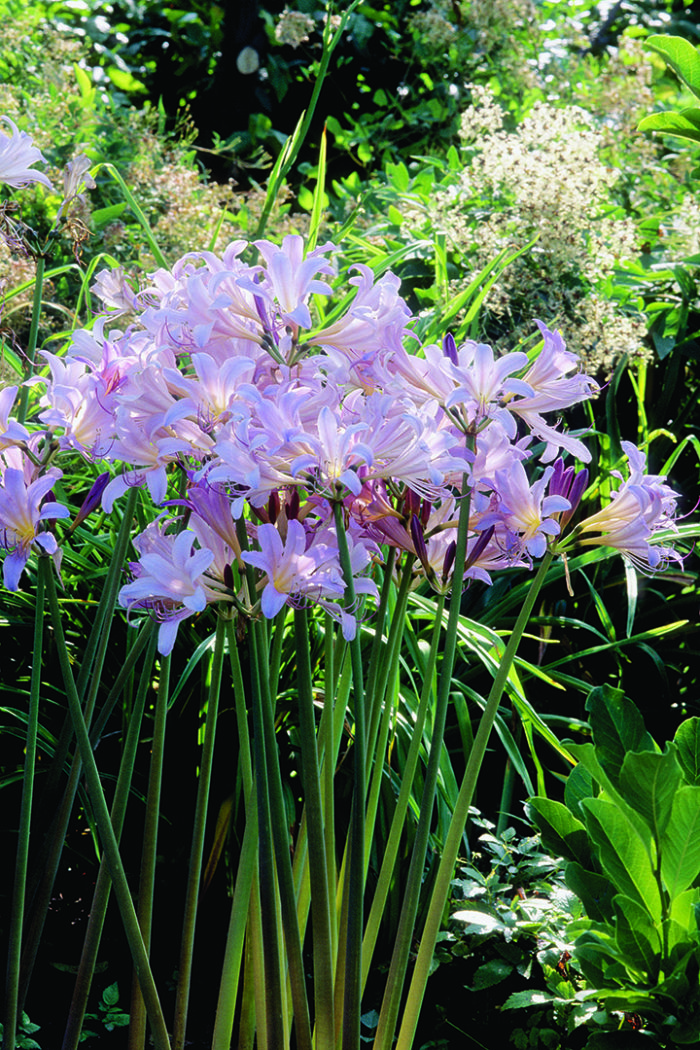
Naked ladies dance with no leaves to hide behind
Name: Lycoris squamigera
Zones: 5–11
Size: 2 to 3 feet tall and 1 foot wide
Conditions: Full sun; fertile, well-drained soil
Naked ladies has surprised gardeners for more than a century, a testament to its staying power in a less-than-flattering moment of the growing season. It tops the charts when many gardens go silent, throwing up leafless scapes of trumpeting pink flowers in early August; the foliage appears the following spring. Enjoy it in a solo flush or in concert with something silver, like western mugwort (Artemisia ludoviciana, Zones 4–9).
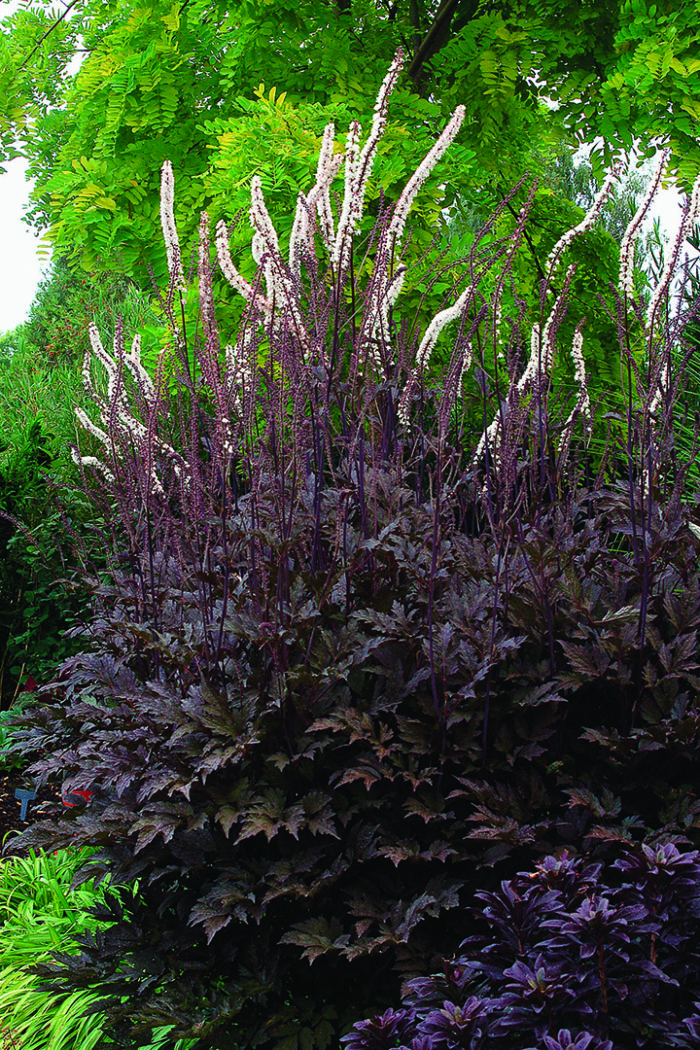
‘Black Negligee’ bugbane brings drama to the shade
Name: Actaea simplex ‘Black Negligee’
Zones: 4–8
Size: 3 to 4 feet tall and 2 feet wide
Conditions: Partial shade; moist, fertile soil
Naughty meets novel in this new cultivar of a staple perennial. With lacquered purple-black foliage that lacily unfurls in late spring, ‘Black Negligee’ bugbane roars through midsummer’s eve looking glam in concert with other shade lovers, like ‘Aureola’ Japanese forest grass (Hakonechloa macra ‘Aureola’, Zones 5–9), and promises a show of grape-scented flowers in late summer and early fall. Although it remains unabated by the heat of summer, you’ll do your bugbane a favor by planting it where it can get consistent moisture.
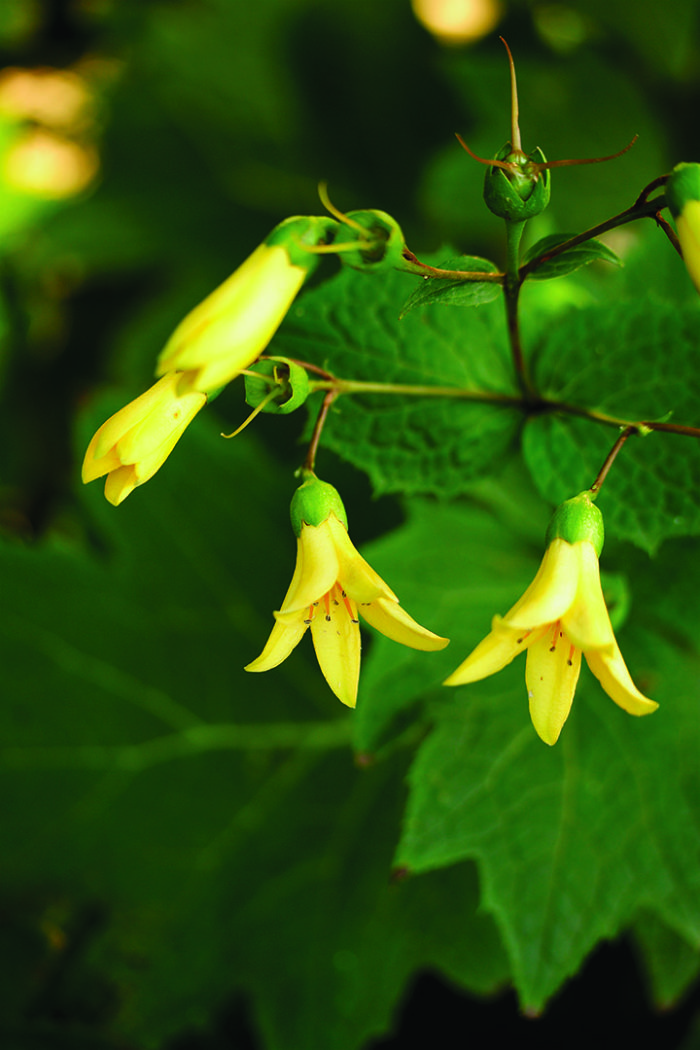
Yellow waxbells add springlike color to the summer woodland
Name: Kirengeshoma palmata
Zones: 5–8
Size: Up to 4 feet tall and 3 feet wide
Conditions: Partial shade; moist, organic, acidic soil
What plant has waxy, dangling yellow flowers in the shade in September? Not many—except yellow waxbells, a reliable performer for dry and moist shade alike. Native to the mountains of Korea and Japan, this essential perennial is posh and practical, creating one of the best impressions you’ll have of the late-summer and early-fall garden. Maplelike leaves provide a contrast to other woodland garden staples, like hostas (Hosta spp. and cvs., Zones 3–9), epimediums (Epimedium spp. and cvs., Zones 5–9), and ligularias (Ligularia spp. and cvs., Zones 4–8), producing textural vignettes that are beautiful even before yellow waxbells begins to bloom.

‘Blaukappe’ flat sea holly is prickly but sweet
Name: Eryngium planum ‘Blaukappe’
Zones: 5–9
Size: 3 feet tall and 18 inches wide
Conditions: Full sun; lean, well-drained soil
If you like sharp objects, you shouldn’t garden without a sea holly. Though the genus is filled with many pointy and interesting characters, ‘Blaukappe’ flat sea holly looks especially attractive in rock gardens or scree, or in little droves along paths where its flowers can garner the most fawning and appreciation. This hot-summer lover thrives in rocky clay—of all places—and attracts a host of bees and beneficial wasps that hover and buzz around its cylindrical clusters of steel blue flowers.
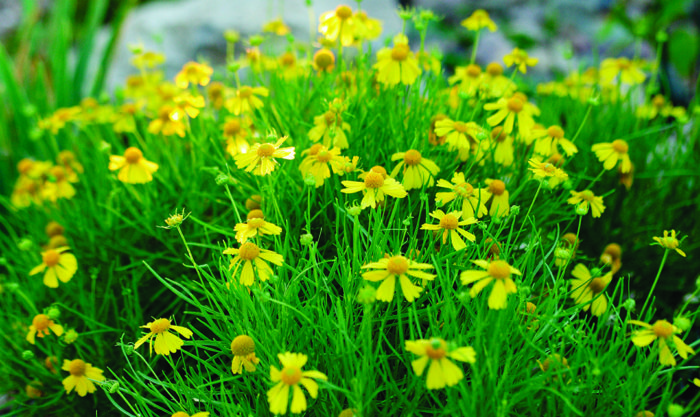
‘Dakota Gold’ sneezeweed is an annual worth buying
Name: Helenium amarum ‘Dakota Gold’
Zones: Annual
Size: Up to 14 inches tall and 2 feet wide
Conditions: Full sun; moist, well-drained soil
Even though I own a T-shirt that says, “Friends don’t let friends buy annuals,” I’m really not that biased when it comes to how a plant chooses to live its life. Annual or not, this care-free dazzler is a staple of my garden, May through frost. ‘Dakota Gold’ sneezeweed knows how to beat the heat. And you can forget about deadheading: This yellow daisy reseeds politely and serendipitously, filling in among all kinds of plants, from irises to sedums, cinching up a garden’s seasonal progression from a rainy spring to a baking fall.
—Kelly D. Norris is a horticulturist and the manager of his family’s nursery, Rainbow Iris Farm, in Bedford, Iowa.
Sources
The following mail-order plant sellers offer the widest selection of the plants featured:
Digging Dog Nursery, Albion, Calif.; 707-937-1130; www.diggingdog.com
Fieldstone Gardens, Vassalboro, Maine; 207-923-3836; www.fieldstonegardens.com
Forestfarm, Williams, Ore.; 541-846-7269; www.forestfarm.com
Fraser’s Thimble Farms, Salt Spring Island, B.C.; 250-537-5788; www.thimblefarms.com
White Flower Farm, Litchfield, Conn.; 800-503-9624; www.whiteflowerfarm.com
Fine Gardening Recommended Products
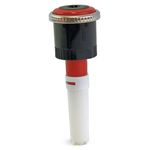
Hunter Industries MP-1000-90 Hunter Nozzle
Fine Gardening receives a commission for items purchased through links on this site, including Amazon Associates and other affiliate advertising programs.
- Double-pop technology flushes the nozzle during start-up and shutdown to prevent clogging
- Wind-resistant, multi-directional streams provide even coverage

Pruning Simplified: A Step-by-Step Guide to 50 Popular Trees and Shrubs
Fine Gardening receives a commission for items purchased through links on this site, including Amazon Associates and other affiliate advertising programs.

ARS Telescoping Long Reach Pruner
Fine Gardening receives a commission for items purchased through links on this site, including Amazon Associates and other affiliate advertising programs.




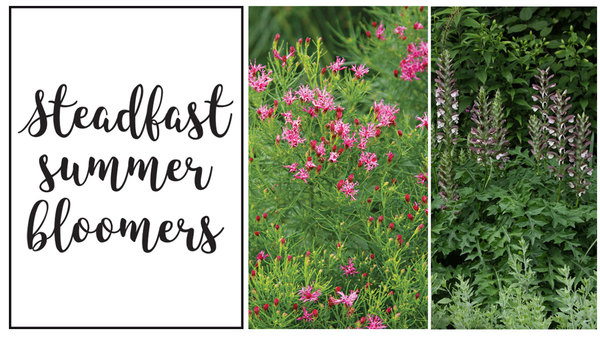













Comments
almost all of these plants need moist conditions, moisture and heat are usually a very good combination. The real test is finding Summer Stars that Beat the Heat in dry conditions!
Log in or create an account to post a comment.
Sign up Log in